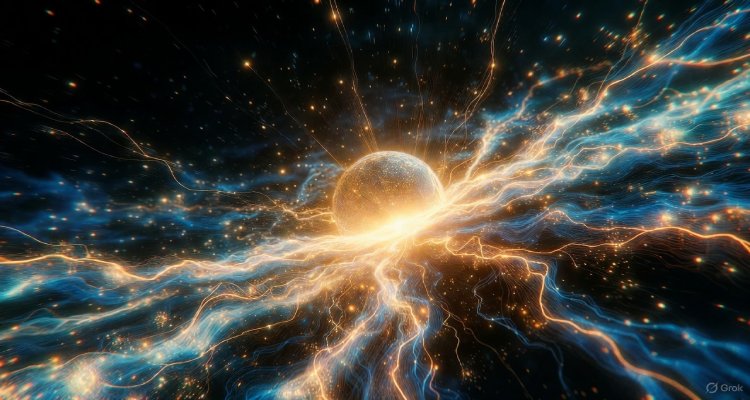Shiva’s Silence: The Cosmic Meaning Behind His Stillness
Discover the profound symbolism of Shiva’s silence—how his stillness embodies cosmic balance, inner awakening, and spiritual liberation in Hindu philosophy.
Introduction: A Silence That Echoes Through the Cosmos
In a world dominated by motion, noise, and perpetual action, there stands a figure who speaks not with words, but through stillness. Shiva—the cosmic ascetic, the meditating deity, the destroyer and transformer—sits in unwavering silence. His eyes closed, body unmoving, mind beyond reach. But this silence is not absence—it is presence. It is not withdrawal—it is wisdom. As humanity navigates increasing noise—literal and metaphorical—the question arises: What does Shiva’s silence truly signify?
Context & Background: Shiva Beyond the Trident
In Hindu cosmology, Shiva represents one-third of the Trimurti—alongside Brahma the creator and Vishnu the preserver. But unlike his counterparts who are more visibly active, Shiva’s power often lies in restraint. He is both the ascetic yogi and the householder, the cosmic dancer (Nataraja) and the meditative sage on Mount Kailash.
Hindu scriptures, especially the Shiva Purana and Upanishads, frequently portray him in deep tapasya (meditation), detached from worldly affairs yet deeply connected to universal consciousness. This paradox—the still destroyer, the silent god of transformation—is where his cosmic silence becomes more than myth; it becomes a metaphor for transcendence.
Main Developments: Decoding the Stillness
Shiva’s silence is not a passive state. It is dynamic, intentional, and full of meaning. Across interpretations, his stillness symbolizes multiple interconnected concepts:
1. Cosmic Equilibrium
Shiva’s meditative pose symbolizes the pause between creation and destruction—a cosmic breath. In quantum terms, it’s akin to the vacuum state—empty yet potent with potential. By being still, Shiva holds the balance of the universe.
2. Detachment and Liberation
In yogic philosophy, moksha (liberation) is attained by transcending the noise of the mind. Shiva’s silence reflects the state of nirvikalpa samadhi—a form of pure consciousness beyond thoughts, ego, and emotion. This is the goal of all spiritual practice: to still the inner turbulence.
3. Resistance to Materialism
In modern times, Shiva’s silence serves as a counterpoint to consumerist culture. His choice to remain detached, shunning grandeur, rejecting excess, and embracing simplicity speaks volumes to those seeking purpose beyond possessions.
4. Inner Revolution
Shiva’s stillness is not escapism—it’s preparation. When he rises from his silence, he performs the Tandava, the dance that dissolves and renews. His quiet is a gathering of power, an inner revolution before outer transformation.
Expert Insight & Public Reflection
Scholars Weigh In
Dr. Devdutt Pattanaik, mythologist and author, writes:
“Shiva’s silence is not indifference but deep listening. He hears what others overlook. That’s what makes him the ideal yogi—alert yet unaffected.”
Swami Sivananda noted in his teachings:
“To understand Shiva is to understand the silence behind the sound, the void that holds the universe. His stillness teaches us to be centered amidst chaos.”
Contemporary Relevance
On social platforms and wellness retreats, Shiva’s image in meditation is increasingly used as a symbol of mindfulness. Yoga instructors, therapists, and philosophers reference him as a model for introspection in an over-connected world.
Twitter user @UrbanYogi recently shared:
“In times of noise, become like Shiva—still, aware, unshaken. The answers come in silence.”
Impact & Implications: Why Shiva’s Silence Matters Now
In a post-pandemic world where anxiety, burnout, and digital overload plague mental health, Shiva’s silence offers an ancient yet relevant solution. It encourages individuals to:
- Reclaim solitude without guilt
- Practice presence instead of distraction
- Cultivate awareness rather than reaction
For leaders, Shiva’s silence symbolizes decision-making through reflection, not impulse. For communities, it’s a call to listen deeper before speaking louder. For seekers, it’s a reminder that truth often whispers from within.
Conclusion: When the Silence Speaks Louder Than Sound
Shiva’s stillness is not a void—it is a vessel of transformation. It’s a reminder that silence isn’t emptiness; it is essence. In his cosmic meditation, Shiva teaches that we don’t need to conquer the world to change it—sometimes, true power lies in simply being unmoved.
In a time when silence is often mistaken for apathy or weakness, Shiva stands as a timeless testament that silence can be sacred, strong, and infinitely more powerful than the loudest voice.
Disclaimer: This article explores the symbolic and spiritual interpretations of Lord Shiva from a philosophical perspective. It is not intended as a religious directive but rather as an exploration of cultural and metaphysical ideas.











